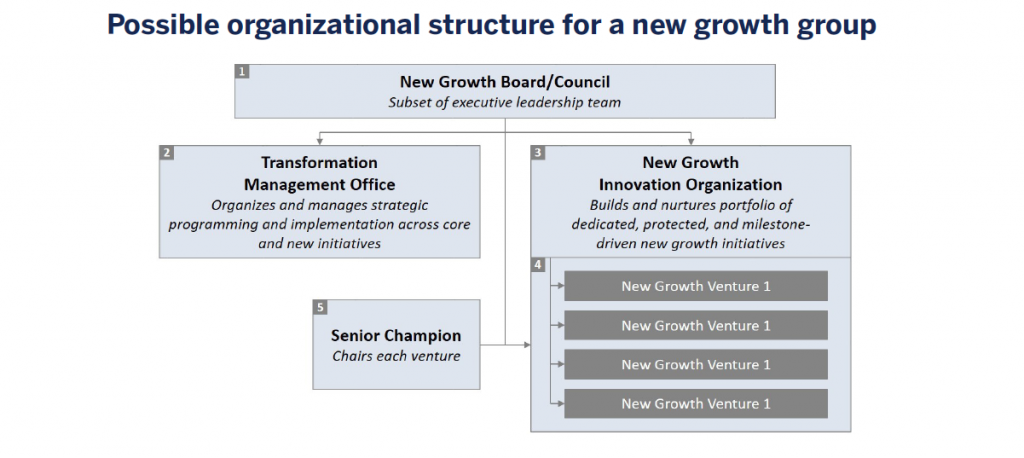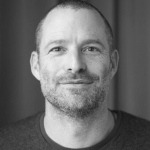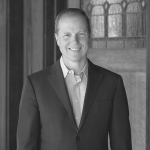The key ingredients to lead from and for the future
Share
This is part two of an article and follows on from ‘Character, competence and perspective’.
Future-back is a competence that can be developed by first creating a vision and then threading it back to the present
by Mark W Johnson, founding partner at Innosight
Transformation is not possible without coordinated, bold leadership that brings future horizons into the present. In recent years, newspapers, grocery stores, music, movies and TV have all been disrupted. It’s not that the leaders of incumbent industries don’t have sharp strategies and plans. The problem is that they extrapolate their current model into the future instead of envisioning the possibilities. Facing the ‘innovator’s dilemma’, corporations tend to work to improve their margins and please their best customers by allocating the bulk of their investments toward improvements that sustain, enhance and make their existing businesses more efficient. New, exciting and potentially disruptive growth initiatives may get a lot of buzz, but they rarely receive the funding they need.
[quote style=’1′ cite=”]Developing and deploying an inspiring and actionable vision is a skill that can be learned. [/quote] Beyond that, it can be driven into the cultures of even the most hidebound organisations, reigniting their entrepreneurial fires and infusing them with a renewed sense of purpose, direction and commercial breakthroughs.
To develop your vision, your first task is to explore what the future is likely to hold, targeting the right time horizon.
Then, you grapple with the implications of that future for your organisation, developing a high-level view of what your customers will value and how market dynamics will work, characterising the major threats and opportunities that are likely to emerge and assessing where ‘business as usual’ would likely lead.
Visioning the future
The online Macmillan Dictionary defines vision as the ability to “think about or plan for the future, using intelligence and imagination”, an “idea or hope of how something should be done, or how it will be in the future” and simply the “ability to see”. Visioning, in a business context, is about having a clear worldview on the markets of the future and the role that your organisation can play in that new and different world. Having a really powerful vision can unleash the potential to transform whole industries. When we call a business leader a visionary, we mean they have a vivid understanding of their organisation’s best possible future – one that can potentially transform whole industries. Vision is the ‘what’ not the ‘how’. Vision is made actionable through strategy, which is the means to achieve it.
Future-back is all about anticipating and shaping the markets of the future
It is what you need when you must play a new game, with a different set of rules. To recognise developments that threaten your existing paradigm, you need to set your planning horizon much further out than most companies do. To leverage those developments to your full advantage, you need to think and lead from the future back.
Image: Lead from the Future by Mark W. Johnson and Josh Suskewicz
To do this, you must assert a point of view on how to best respond to and shape that future, defining the desired future state of your enterprise inclusive of both the evolution of its current businesses and the development of new ones. Put it all together and you have got a vision that’s ready to be translated into a future-back strategy.
Image: Lead from the Future by Mark W. Johnson and Josh Suskewicz
More specifically, you need to think in terms of filling and balancing a set of three linked and interdependent portfolios: 1) the future state portfolio, which is a financial projection of your enterprise at your target end date, 2) the innovation portfolio, which captures programs and initiatives in the present that set you up to evolve into the future state, and 3) the investment portfolio, which specifies the resources that fund the innovation portfolio.
Future-back thinking needs to be embraced by a whole leadership team, emphasising the importance of skillful stakeholder management. This is particularly true for CMOs who, according to a recent Marketo report about marketers’ views of the future, are almost six times more likely to identify executive buy-in as the core problem compared to CEOs.
For that to happen it is critical to ensure your company’s leadership spends enough time together thinking in both ways: present-forward and future-back thinking. Quarterly future-back reviews can be great opportunities for collective thinking and for keeping strategy efforts on track.
For future-back thinking and doing to truly take root in an organisation, look to nurture these four ingredients:
- the understanding that successful enterprise leadership is as much about exploring and envisioning as executing and operating
- a willingness on the part of its members to change their behaviour, even if they’re not ready to change their minds
- a willingness to ‘dance’ with each other, guided by the structure of a shared vision for the enterprise, and
- a strong, independent board and the willingness to collaborate with it.
Just as vision needs to be translated into a strategy, a strategy must be carefully programmed into an organisation before it can be effectively implemented.
When programming a breakthrough strategy, you must design and assemble a set of components that ultimately come together as an integrated system that 1) formalises the roles and responsibilities of the senior leadership team as champions of the strategy, 2) sets up an organisation model that protects breakthrough innovation teams from the countervailing influences of the core, and 3) manages initiatives with a process that incentivises a faster pace of learning.
 Image: Lead from the Future by Mark W. Johnson and Josh Suskewicz
Image: Lead from the Future by Mark W. Johnson and Josh Suskewicz
What to listen to when trying to foresee future breakthroughs.
Great economic paradigm shifts occur when, in a given moment in time, three defining technologies emerge and converge, creating a new infrastructure that changes the way that society manages, powers and moves its economic activity, social life and governance. These are new means of communication, new sources of energy and new modes of mobility and logistics that, combined, result in changes to our built environment, our spatial-temporal orientation, our business models, our governance and, fundamentally, our narrative. To achieve breakthrough growth, map out how these three types of tech – communications, mobility and energy – are evolving and where and how they converge. That’s your sweet spot.
To achieve and sustain breakthrough growth, leaders are encouraged to master the future-back managerial approach, one that is more intuitive but no less rigorous. On that same Marketo report, only three percent of marketers considered their teams to be cutting edge, compared to nine percent of CMOs and, while investments in tech can provide serious value, the ability to create disruptive offerings can be exponentially greater. Embracing the future and threading it back to the present gives you a competitive advantage.
As Amazon founder Jeff Bezos has said:
[quote style=’1′ cite=”]It’s all about the long term. As a company, we are cultural pioneers, and we like to disrupt even our own business. If everything you do needs to work on a three-year horizon, then you’re competing against a lot of people. But if you’re willing to invest on a seven-year time horizon, you’re now competing against a fraction of those people, because very few companies are willing to do that.[/quote]
From agency leader to humanitarian leader: the power of perspective to redefine the future
by Saul Betmead de Chasteigner, global CMO at United Nations World Food Programme
I could talk about how perception, positioning and politics are often more important than the actual innovations themselves, and that the success of those interventions is often driven by an organisation’s ability to claim, demarcate and control the category when successfully taking a new product or a new service on the path to becoming the dominant design. I could explore how remarkable the tools that marketers and their agencies now have at their disposal. These are tools that can not only augment existing products and services, but also create entirely new ones – capabilities that in under a decade have transformed the face of marketing, putting it firmly in the driving seat of distinctive, valuable customer experiences. But I suspect most of the readers of this article will already have heard a lot about these things, and on reflection it would also be something that I could have written before I started at the United Nations World Food Programme (UNWFP). So I decided on a different tack.
So, what’s new? How have my perspectives on foresight, innovation and leadership changed over the last year?
Working at the UNWFP has taught me a great deal about innovation. It’s been humbling but also inspiring, and those lessons come down to a fundamental idea, captured by one of my favourite authors, American William Gibson: “The future is already here, it’s just not very evenly distributed.” It speaks to me because I now work for an organisation that in any given year can feed over 100 million of the most vulnerable people on earth.
It is an organisation that is the logistical backbone of the global humanitarian system, and an organisation that has just been awarded the 2020 Nobel Peace Prize for its impact in the world. Part of that Nobel recognition I think is because the organisation is the logistical backbone of the global humanitarian system, driven by its capability in more traditional technologies: the aeroplanes, the trucks and the remarkable Sherp. But at the same time, it is one of the most innovative organisations I have ever seen, it has taught me to treat innovation simply as a potential solution to a difficult problem, even when those innovations feel like they belong exclusively in the richer, more developed nations.
It’s taught me the importance of being able to sense where and what those innovations are, and to be open minded. They could come from within the organisations remarkable 17,000-plus staff, from our partners or beyond.
[quote style=’1′ cite=”]It has also taught me to constantly push to find ways to shape them into scalable solutions, even in the most challenging places on earth, and critically to be able to pivot when the unexpected happens – enter COVID-19. [/quote]
One particularly good example for me is in the world’s largest refugee camp in Cox’s Bazar, Bangladesh. With no means to earn an income, many of those in the camp depend entirely on agencies such as UNWFP to survive. Each month the recipients of food assistance are told when to collect their assistance from a variety of humanitarian organisations stationed within the sprawling camp, juggling a range of authentication forms for the various agencies.
UNWFP introduced blockchain technology to allow recipients to collect assistance from multiple humanitarian organisations, including UNWFP, in one go. The system is designed to be touch-operated but, because of the COVID-19 pandemic, a digital QR (quick response) code was issued, allowing people to collect assistance without having to handle potentially contagious devices. As of September 2020, blockchain is serving over 500,000 of the 855,000 Rohingya refugees in Cox’s Bazar, and we are working to extend its use to all of them before the year’s end. There are countless examples like this – from creating new kinds of high-altitude food delivery drop systems to get to the remotest of places, to hydroponics for smallhold farmers that can transform a community’s futures.
This experience has helped stop me being bound by what the Gestalt psychologists called ‘functional fixedness’, a condition from which we all suffer – struggling to see something from a different perspective to that in which it was originally used.
[quote style=’1′ cite=”]It has made me think that in creating a better future for those who have fallen the furthest behind, rather than thinking about innovation as the next disruptive big thing, it’s perhaps much more about context model innovation – where ideas in one place, whether they are the latest technologies or those used for thousands of years, can find an important, life-saving and life-changing role in another.[/quote]
Conclusion
by Sérgio Brodsky, executive producer at Futurecast
There is no greater fear than the fear of the unknown. Strategic foresight and futures thinking exist to help tame the imaginary line connecting now and then. Competence alone is not enough; character and perspective are also required in equal doses. This means that working with the future needs a lot more than hype cycle analyses and predictions about the future of this and that from self-anointed guru-ninja-hackers without any proper training in foresight. Developing strong characters is fundamental to ensuring an ethos of good ancestry. Practising future-back management is critical to enabling breakthrough innovation and leapfrogs when the road ahead seems rather foggy. [quote style=’1′ cite=”]Nurturing a sense of perspective becomes the antidote from getting stuck in antiquated ways of working, thinking and behaving.[/quote]
Marketing’s new research and developments can indeed be quite distracting given their high frequency and volume. In trying to make sense of the new and generate brand buzz from it, marketers end up missing out on rather transformational opportunities – those where the future can be more evenly distributed.
This is rather disconcerting since marketers are often some of the most well-rounded and best-informed professionals in their organisations, with a sharp sense of ‘what’s next’. Still, many get caught by the glitz of the novel, instead of putting their energy in the grittiness of the foresight process. In fact, when it comes to crystalising the definition of the 21st century marketer, Google conducted an experiment that involved interviewing 30 board members from Fortune 1000 companies, having accumulated more than 1300 minutes of audio and over 100,000 words about the role of the CMO (Think with Google 2020), which was then summarised in one long, important paragraph:
“The 21st century CMO is expected to be a marketing miracle worker, an alchemist who combines classic art of branding with the latest advances in data and measurement. All this while you serve as the connective tissue of the C-suite and stay a step ahead of the rapidly changing landscape of digital technology, cultural trends and shifting consumer expectations – things becoming ever more important to the stock price. Customers matter more than ever and, since you’re responsible for them, your role should matter more than ever too. But board members do not seem to have one cohesive definition of the role. So, what are you to do? Internally, steer expectations for your role by defining growth, you have some control over. And recognise that the talent of your team is half the battle to achieving that growth. Hire the best measurement people, because marketing will be held to some metric that is currently beyond reach, and you’ll need them to invent it. There are many ways you can impact revenue – but be prepared to show the ‘I’m indispensable’ maths. And do not forget the most visible CMOs also take big risks. Only three percent of board members interviewed were marketers. Likely, they do not hear you. Listen closely and find the overlap between what the board is interested in and your responsibilities. And, instead of building slides about everything you do, build one slide that puts you in a position to start a conversation around those common interests and goals.”
What is interesting to note is that futures thinking is all over the paragraph and yet, nowhere on it. As haiku-esque as a statement, this is the closest to the truth. Strategic foresight and futures thinking are not explicitly mentioned, but implicitly dominate the subtext, with clear emphasis on character, competence and perspective too. Therefore, the opportunity is to nurture the Futurecast seed, and develop the gravitas required for marketers and their peers to encourage and normalise the allocation of foresight investment. If education is key to opening more doors for foresight, appropriate use of language is the red carpet welcoming the long-awaited guests that can help reshape the future for the better.
For the ambitious marketers out there, this is just the beginning of your futures literacy. Use it and pierce the future through the present.
|
|
Sérgio Brodsky is the executive producer of Futurecast and a leading brand and foresight strategist. |
 |
Saul Betmead de Chasteigner is the chief marketing officer at the United Nations World Food Programme. |
 |
Mark Johnson is co-founder and Senior Partner of Innosight. |
Artwork:
Original illustrations and artwork by Tobi Laniyan.
Other images are excerpts from ‘Lead from the Future’ by Mark W. Johnson and Josh Suskewicz.














